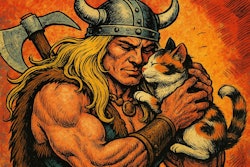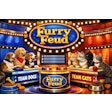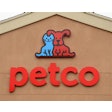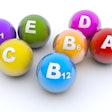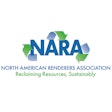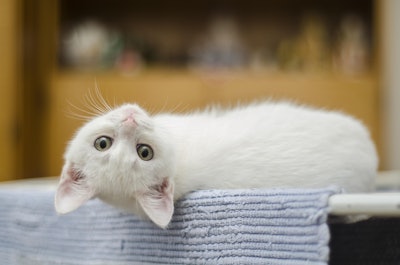
Any cat lover knows that cats are cute but highly capable larcenists that can snatch away whatever they want — be it a tiny piece of kibble or an entire pet food market.
Such are the cats in Indonesia.
In 2023, 5.1 million cats in Indonesia consumed 64,650 tons of dry food, valued at IDR (Indonesian rupiah) 2.2 trillion (US$130.24 million). The cats also devoured a copious amount of wet food (11,170 tons) worth IDR 585.3 billion (US$34.6 million). By the end of 2023, the cat food segment was 77.5% of the total Indonesian pet food market.
How cats in Indonesia dictated the present size and shape of the pet food market in their favor can be gleaned from a quantitative report by the U.S. Department of Agriculture Foreign Agricultural Service (USDA FAS). In partnership with Mintel, a global market intelligence firm, and Winner Research from Jakarta, Indonesia, they found:
- The cat population surged by 137.6% between 2017 and 2022.
- About 47% of Indonesian households had at least one cat in 2022.
- The cat food segment registered a remarkable increase of 32.2%, rising from IDR2.1 trillion (US$127.0 million) in 2022 to IDR2.8 trillion (US$169.4 million) in 2023.
- The cat food segment accounted for 74.6% of the total pet food market in 2022.
- Pet cats in Indonesia like their food dry. Between 2022 and 2023, the dry cat food segment grew by 31.9% in volume, from 49,040 tons in 2022 to 64,650 tons in 2023.
- Indonesia's pet cat population is expected to balloon to 5.9 million by the end of 2026.
Indonesia's cat-led pet food industry dynamics
A cursory look at Indonesia's present pet food market could easily lead to this conclusion: Cats rule and dogs follow.
Based on the USDA FAS-led industry report, Indonesia's overall pet food market in 2023 reached a value of US$237.06 million, marking a 24.5% year-over-year increase from the previous year's value of US$190.38 million. Between 2019 and 2023, the market grew at a CAGR of 17.2%. This momentum is expected to continue with a projected CAGR of 12.6% from 2024 to 2028.
Recent data from Mintel specifically for the Indonesian pet food retail market are also very encouraging. From 2022 to 2023, the retail section logged a total market value of IDR 2.8 trillion (US$169.4 million) to IDR 3.6 trillion (US$217.8 million), respectively, or a 27.2% growth year-on-year. In 2023, the volume reached 99,000 tons, Mintel added, marking the market's strongest performance in recent years.
Analysts believe the ongoing surge in demand can be attributed to a growing middle class, changing attitudes toward pet care, increased awareness of the importance of proper pet nutrition and cats' indubitable popularity.
Over two-thirds of the whole market goes to cat food (77.5% in 2023), while dog food accounts for only 22.5%. As Indonesia's de facto pet of choice, cats have it in them to bring their side of the market at a CAGR of 18.7%, the report said.
Much of the expected market volume and value increases in the future will come from the dry cat food segment. In 2023, dry food accounted for 85.4% of the total cat food volume (64,650 tons), up from 83.2% in 2022 and for 78.9% of the total market value (IDR 2.202 trillion/US$133.2 million), up from 76.3% in 2022.
Dog food lags, but grows steadily
Dogs are not the star of the pet show in this predominantly Muslim country. Because only non-Muslim residents—about 10% of Indonesian households—are likely to own pet dogs, the dog food market significantly trails the cat food segment.
It’s not all bad news, however, as dogs still consumed 19,810 tons of dry food and 3,590 tons of wet food in 2023.
While still growing, the dog food segment saw a more modest increase of 12.4%, rising from IDR 719.7 billion (US$43.5 million) in 2022 to IDR 809.1 billion (US$48.9 million) in 2023. Although the dog food market remains substantial, the industry report noted its slower growth may reflect a more mature, even saturated, position in some areas, with dog owners having already developed consistent purchasing habits.
As in the cat food sector, dry food dominates in the dog category. In 2023, dry dog food reached 19,810 tons, valued at IDR 631.1 billion (US$38.2 million), up from 17,890 tons (IDR 550.7 billion/US$33.3 million) in 2022. Wet dog food grew more modestly from 3,510 tons worth IDR 169 billion (US$10.2 million) in 2022 to 3,590 tons valued at IDR 178 billion (US$10.8 million) in 2023.
Importers and manufacturers catering to cats
Seeing the significant impact of cats on the industry, Indonesian pet food importers and manufacturers are making sure they cater to the capricious small eaters. Imported cat food, for example, makes up 94% of the total market, but locally produced cat food is also enjoying complete representation across all retail areas and outlets, the report said.
“Locally produced cat food achieves 100% coverage in both Jakarta and Surabaya and in both pet shops and clinics,” said the report. “This highlights the dominance and widespread availability of local cat food products, which coexist alongside a high proportion of imported options. While imported cat food has a strong market presence, local brands have achieved full penetration, ensuring accessibility and variety for consumers in both urban areas and across different types of outlets.”
In 2023, Indonesia imported a total of 93,805 tons of cat and dog food worth US$173.427 million. Thailand was the top exporter (37% of total imports) having shipped 35,715 tons of pet food valued at US$63.540 million. China, which offered a more competitive price point, came second by supplying 30% of Indonesia's pet food imports worth US$52.168 million but with a higher quantity of 38,649 tons. France ranked third, contributing US$30.305 million (18%) with 8,027 tons of mostly premium pet food. Imports from the U.S. totaled $3.366 million, which was only 2% of Indonesia's import requirements for 2023. The report said the U.S.'s moderate footprint in this specific region reflects how its focus was more about quality rather than quantity.
Unlike other Southeast Asian pet food markets that multinational companies dominate, Indonesia's industry leaders are the locals, led by Charoen Pokphand Group with 22.4% market share in 2023, followed by Matahari Sakti with a steady 20% share. Taking the third and fourth spots were PT Evo Nusa Bersaudara and PT Japfa Comfeed Indonesia Tbk, with 15.5% and 17.6% market shares, respectively.
Mars Inc., a powerhouse wherever it goes, cut itself an 8.2% share of the market pie in 2023. The company, however, did better in the same year at the retail level with 19.3% share, second to Charoen which still dominated with 30.9% retail market share.
Top brands like Royal Canin, Whiskas and Me-O are visible in the market, but local brands such as Bolt, Beauty and Cat Choize offer strong competition due to their affordability. According to Yamada Consulting & Spire, new entrants can compete through competitive pricing or by targeting niche segments.
Nipping at the big five's value shares are smaller companies that occupy niche segments of the market, contributing to the diverse landscape of pet food offerings in the country, the report said.
How many pets are there in Indonesia? About 7.8 million in 2022, by Mintel's estimation, which helped the country carved a 4% regional market share. Though this is still relatively small compared to other Asian pet food markets' size, Indonesia's industry growth trajectory is consistent to make it a key player soon. Internally, its pet food industry is expected to see an average annual increase of over 10% in the coming years, thanks to cats.
~~~~~~~~~~~~~~~
LOOKING BACK: Despite pandemic, Indonesia pet food remains bullish



